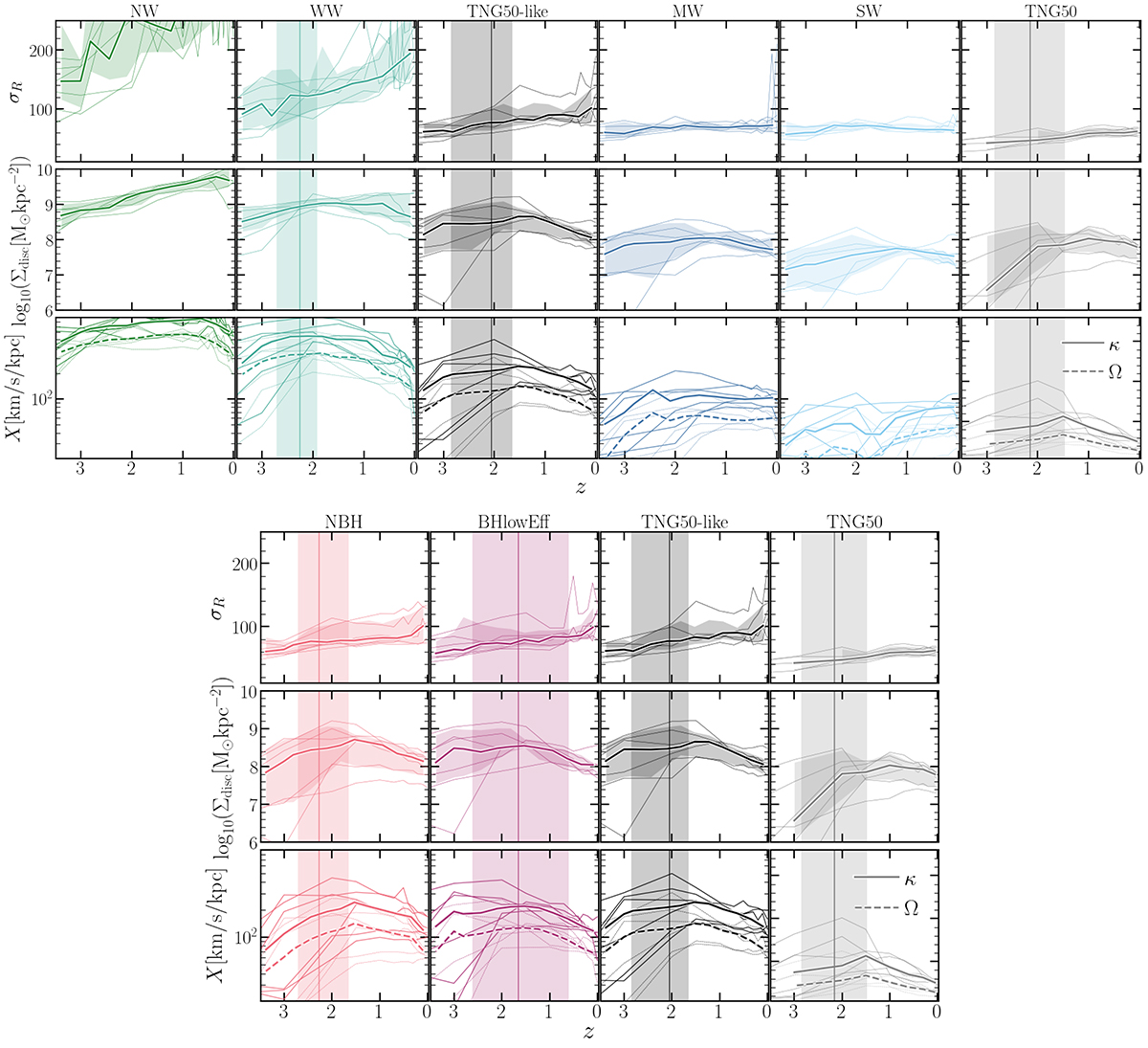Fig. 8.

Download original image
Evolution of radial velocity dispersion, stellar surface density, epicyclic, and angular frequency in a stellar half-mass radius aperture. From left to right, the different galactic wind models (top figure) and BH physics models (bottom figure) are shown. The last column on the right corresponds to the original galaxy in TNG50. Thinner solid lines correspond to individual haloes. Vertical solid lines and shaded regions represent the median redshift and the distribution between 20th and 80th percentiles of the bar formation time. The three galaxy properties are highly affected by the SN feedback process, especially the radial velocity dispersion. The highest velocity dispersion is presented in the NW and WW models, causing the Toomre criterion to determine stable discs in contrast to the predictions of ELN and MMW criteria.
Current usage metrics show cumulative count of Article Views (full-text article views including HTML views, PDF and ePub downloads, according to the available data) and Abstracts Views on Vision4Press platform.
Data correspond to usage on the plateform after 2015. The current usage metrics is available 48-96 hours after online publication and is updated daily on week days.
Initial download of the metrics may take a while.


